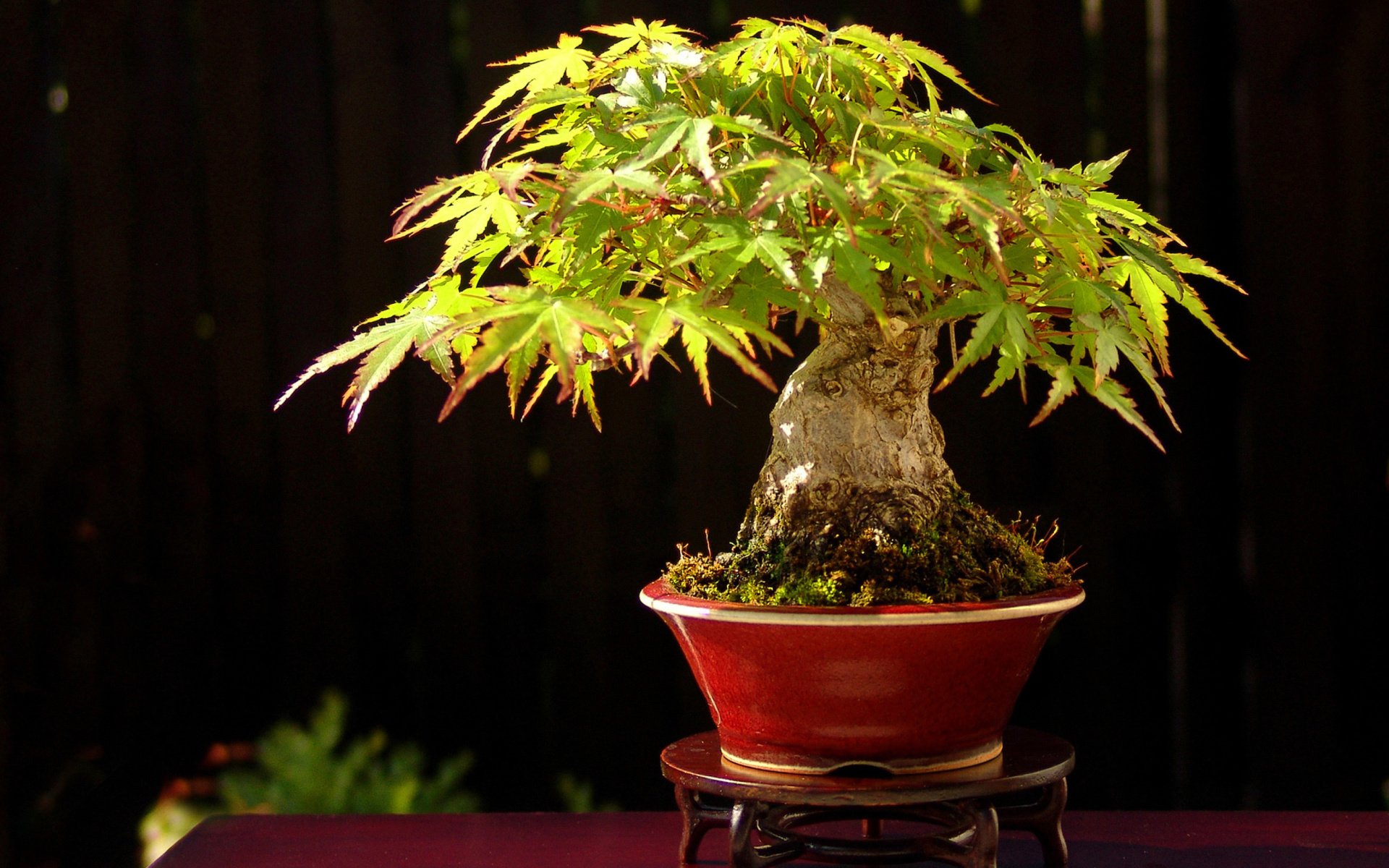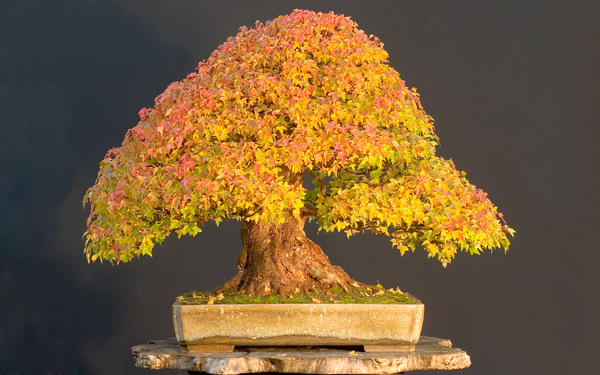
Are you familiar with ‘Bonsai’? It is an art in which you take care of miniature trees and plants in a pot and enjoy its beauty. ‘Bonsai’ in Japan has long been considered to be an old men’s hobby; however, it started to become internationally popular as living artwork since 1990s. Now the term, ‘bonsai’ is registered among the vocabulary in authoritative English dictionaries published by Oxford University and Cambridge University. The word ‘bonsai’ has entered the universal language. In Europe, where gardening has been traditionally practiced, nearly 30 magazines specialised in ‘bonsai’ are being published. Some enthusiastic fans visit Japan to learn from the masters in bonsai gardens, hoping to acquire the authentic techniques. Omiya Bonsai Village in Saitama is now attracting international interests. Despite its remote location from the Central Tokyo, this seemingly rural area has had more foreign tourists than ever in these few years. This article explores Omiya Bonsai Village, so called ‘the Mecca of Bonsai’, a must-visit for bonsai lovers.
So, what is ‘bonsai’?
The history of ‘bonsai’ traces back to approximately 1,300 years ago in China. It evolved into what it is today after the art was imported to Japan in Heian period (8 – 12c). You might think the art of bonsai resembles potted plants in gardening, where you plant a tree or flowers in a pot. However, ‘bonsai’ is something completely different. In gardening, you appreciate the natural beauty of the plants themselves. You give plenty of water and fertiliser to the plants so that they will thrive and grow big. The goal for bonsai is, however, to ‘recreate the natural landscape within the small universe within a pot’. It requires training and techniques to adjust the amount of green and its colour, to mould the tree using wires, and to trim the branches in order to highlight the beauty of a particular branch. Another difference between bonsai and regular gardening is that in bonsai you even control the growth of the plant by intentionally give little water or fertiliser (this process is called ‘karai’). The dry and coarse texture of the withered trunk can also be appreciated as beautiful in bonsai. Bonsai started to be gradually known internationally since the Osaka Expo in 1970. It has become internationally popular since 1990s when it was introduced as an artwork which creates ‘a small universe’. Nowadays, many people across the world enjoy ‘bonsai’ – you can find many photos of bonsai on Instagram where international bonsai amateurs are uploading their pictures with the hashtag, ‘#bonsai’, on a daily basis.
What is Omiya Bonsai Village?
In Edo period, there were many gardeners around Tokyo who took care of the gardens in the manors of feudal lords. After the Meiji Restoration, these gardeners started to run their own bonsai business. Their business was severely damaged by the Great Kanto Earthquake in 1923, which triggered many of them to collectively move to Omiya in Saitama, where a large piece of land was available. Before the World War II, more than 30 bonsai businesses were thriving in Omiya and many important figures paid a visit to this place. It is said that most of the governmental exhibits in the bonsai section of Osaka Expo in 1970 were from Omiya Bonsai Village. In 1989, the 1st World Bonsai Convention was held in Omiya, Saitama, which attracted about 1,200 people across the country and across the world. Omiya Bonsai Village today has six bonsai gardens which preserve the traditional artistic practice to this day. In this village, it is not only bonsai gardens which own many beautiful bonsai. When the village started, they made a set of rules for all residents. The four rules are: ‘to own more than 10 bonsai’, ‘not to build the two-story houses’, ‘to build hedges not walls’ and ‘to leave the gate open at all time’. The atmospheric landscape from the time the village started is still preserved in this area, which makes this village one of the most luxuiousr residential areas in Saitama.
Omiya Bonsai Art Museum – The first museum that is dedicated to bonsai art

When you visit Omiya Bonsai Village, the first destination for you to go is Omiya Bonsai Art Museum, the first publicly run museum that is dedicated to bonsai art. Its garden always has about 50 bonsai in its prime, inviting visitors to fully enjoy them from different directions and angles. The building has a gallery which explains how to display bonsai in different Japanese style rooms. You can also enjoy the exhibits like ‘bonki’ or a pot especially used for bonsai art; ‘suiseki’ or a miniature landscape stone; wood-block print and scrolls depicting bonsai; and other references regarding bonsai art. You can hire an audio guide (Japanese, English, Chinese, and Korean are available) with 300 yen, so you will be able to thoroughly enjoy your visit even when you are not a Japanese speaker. There is also a Japanese restaurant across the museum where you can enjoy food as well as bonsai.
Bonsai Shiki no Michi (Roads of Four Seasons) and Shiki no Ie (the House of Four Seasons)
As you step into Omiya Bonsai Village, you will be welcomed by a beautiful landscape of a series of atmospheric houses. Those who moved to this part of the country in early 20th century laid the roads in a grid pattern, planting different trees from streets to streets, such as cherry, momiji (Japanese maple), keyaki (Japanese zelkova) and maples. Each road is given a name according to the trees it has, like ‘Cherry Street’, as a part of the Roads of Four Seasons. Get a copy of ‘Bonsai Village Illustration Map’ from Omiya-koen Station or a copy of ‘Omiya Bonsai Village Walking Map’ from Omiya Bonsai Museum. It is nice to have a stroll in the neighbourhood with a map in hand. If you get tired from walking, stop by at Shiki no Ie on Momiji Street. This is a wooden house with a Japanese garden, a public facility to take a break. You need to pay an entry fee if you wish to enter the Japanese style room, but anyone can take a break for free in a lounge with an earthen-floor space and a fireplace. Have a break in the Japanese style house to feel the flow of time in this relaxed village.
Shiki no Ie
267-1 Bonsai-cho, Kita-ku, Saitama-shi, Saitama
Opening hours: The lounge 9.00 – 17.00, Japanese Room 9.00 – 21.30 (Open every day)
Six bonsai gardens which preserve the traditional mastery
There are six bonsai gardens in Omiya Bonsai Village today. In these bonsai gardens, you can see brilliant bonsai artwork and their craftsmen working on their current projects. You may be able to see one of the apprentices who are originally from overseas.
Fuyo-en
This garden is specialised in ‘zouki bonsai’ (bonsai with deciduous trees) and ‘yoseue’ (assortment of several plants), creating soft and delicate texture in their work.
Kyuka-en
This garden is specialised in ‘soekusa’ or potted plants to give accent to the main bonsai. They have more than 300 kinds of bonsai ranging from introduced species and garden plants.
http://www.iris.dti.ne.jp/~kyukaen/index-e.htm
Seikou-en
This garden is dedicated to pursue the refined beauty while preserving the art of Edo. ‘Saika bonsai’, which is an original creation of this garden, has been popular among women.
http://www.seikouen.cc
Mansei-en
Opened in 1925, this garden has the longest history of all. Their expertise is in creating profound landscape, using unique materials such as Yezo-matsu (Picea jezoensis).
Toju-en
This garden creates a number of small bonsai and bonsai using popular trees such as Goyo-matsu (Pinus parviflora). They also offer bonsai classes to the members of public.
Shosetsu-en
The owner of this garden has given a demonstration in the Omiya Bonsai Village antenna shop in Paris.
In many of the gardens above accept visitors. You are expected to adhere to the general rules, ‘be quiet’, ‘do not touch the bonsai work’, and ‘no photography allowed’. Some gardens may allow visitors to take pictures, so do ask if you are not sure. Note that these gardens are closed on Thursdays.
Here is a tip to fully appreciate bonsai in bonsai gardens. The right angle to look at bonsai is from the front. This is because bonsai is designed to be placed in ‘tokonoma’ or an alcove in traditional Japanese style rooms. Bonsai are carefully arranged so that angle, balance and volume looks at its best when seen from the front. After appreciating bonsai from the right angle, try to look up from a lower position. It would make you feel as if you were standing under a large tree.
Omiya Bonsai Festival
Omiya Bonsai Village holds ‘Omiya Bonsai Festival (Dai Bonsai Matsuri)’ between 3rd and 5th May every year. It attracts many foreign tourists. Masterpieces owned by bonsai gardens are exhibited only for this occasion, along with a series of bonsai from bonsai makers across Japan and bonsai amateurs. There will also be a bonsai fair where bonsai and utensils are sold by approximately 120 retailers. It is indeed a festival of a great scale. You can ask for some good tips from the sellers and you can also ask for discount. Looking around the stalls full of green will make you at home in the world of bonsai.
Summary
Today, mini-bonsai and bonsai themed cafés started to be popular among young people in Japan. Gardening has been popular as an attempt to introduce green at home to get relaxation from it, but bonsai has now become a part of this movement. It is certainly influenced by the international popularity of bonsai. The 8th World Bonsai Convention will be held in Omiya Bonsai Village in April 2017. A number of visitors across the country and the world will gather in Omiya to appreciate the beauty of bonsai. Why don’t you try to take a look at the world of bonsai, the art to create the natural order in a small universe of a pot?
